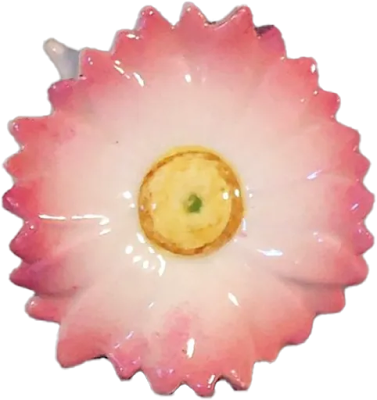Etruscan Ivory Ware shell dish
The very first thing I need to say is that I hate the term "albino majolica."
I don't know who coined the phrase "albino majolica". I've always attributed it to Charles Rebert - but for all I know it was a term in use before the publication of his book "American Majolica 1850-1900". One thing is certain though - his use of the term in his book was picked up by Mariann Katz-Marks in her original soft cover books on majolica which were extremely influential in the formation of the American majolica market despite glaring inaccuracies. From there it entered the collecting lexicon.
I don't know who coined the phrase "albino majolica". I've always attributed it to Charles Rebert - but for all I know it was a term in use before the publication of his book "American Majolica 1850-1900". One thing is certain though - his use of the term in his book was picked up by Mariann Katz-Marks in her original soft cover books on majolica which were extremely influential in the formation of the American majolica market despite glaring inaccuracies. From there it entered the collecting lexicon.
What I dislike most about it is that it is a misnomer. "Albino majolica" is not majolica at all; it is decorated earthenware. A loose case can be made for describing luster glazed earthenware as majolica but it too does not fulfill one of the simple definitions of majolica: an earthenware body covered with an opaque tin glaze; covered again with colored glazes and fired a second time at a high temperature to fuse the colored glaze to the opaque under glaze. Decorated earthenware is covered with a white slip and a transparent or opaque glaze. Lusters are applied on top of the glazed ware and fired at a low temperature. They wear off easily because they don't fuse with the glaze underneath, they sit on top of it.
The same can be said of plain decorated earthenware. This is glazed then covered with firing enamels which are heated to fix the enamel color to the body. In neither case are these true majolica.
The ware we call "albino majolica" is actually a modern tern for the decorated earthenwares made in England by companies like George Jones. Many of these used the same molds that produced majolica which may account for some of the confusion.
George Jones earthenware cheese bell
George Jones majolica cheese bell
George Jones earthenware dresser plate
George Jones majolica dresser plate
George Jones earthenware wild rose cheese bell
George Jones majolica wild rose cheese bell
George Jones earthenware strawberry server
George Jones majolica strawberry server
Probably the most famous "albino" or decorated earthenware came from the Etruscan Works of Phoenixville. The Ivory Ware line is usually placed under the umbrella of the "albino" name along with the decorated earthenware product from the company, Venecine.
Etruscan Venicine Cauliflower sugar bowl
Etruscan Majolica Cauliflower sugar bowl
Ivory Ware was the company's version of the Belleek wares so popular at this time. Made with an eye towards capturing some of this market, the ware was a blatant imitation of Belleek in both glaze and subject matter. What the company could not capture with the thick earthenware body, was the translucent quality of porcelain that made Belleek so desirable. In spite of not marking most Ivory Ware - in the hope of confusing the consumer into thinking it was fine imported ware - it proved to be an unsuccessful product and never achieved the success their majolica and creamware would achieve.
Etruscan Ivory Ware Shell compote
Etruscan Venicene Shell plate
Etruscan Venicene Hawthorn pitcher
Etruscan Venicene cheese bell
It's unfortunate than none of these pieces are appreciated much by majolica collectors today. The prices they bring are always just a small fraction of what a full color majolica example would bring.
Other companies whose work is often included under the term "albino majolica" is Haynes' Avalon Faïence and Clifton Decor of the Chesapeake Pottery and Edward Bennet, both of Baltimore. These too are decorated earthenware although the French term "faïence" is sometimes used to describe this type of over-the-glaze enamel decoration as well.
So where does this leave the modern collector? Like any other antique, I would suggest buying what you like. There are great bargains to be found in these types of wares if the savvy collector just keeps his eyes open. Although they'll never achieve the prices nor the popularity of true majolica, they are still beautiful and an integral part of Victorian pottery history.



















































